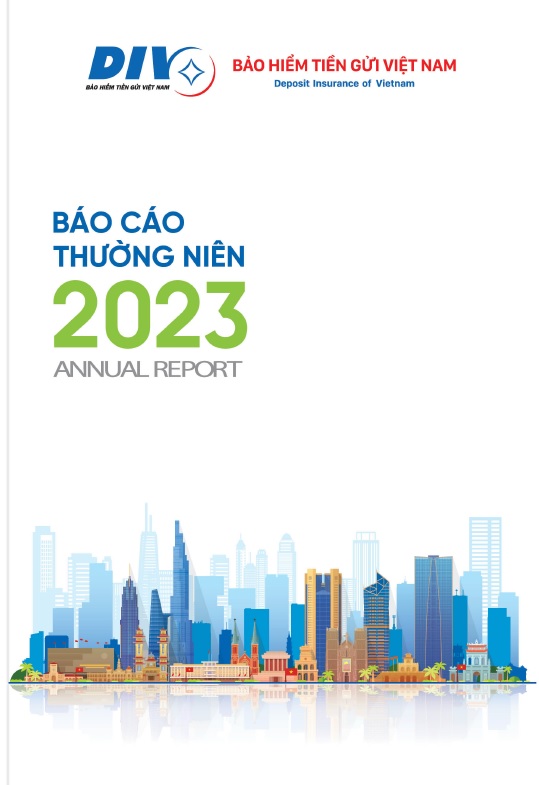
Throughout the development of the modern financial system, policymakers have considered deposit insurance a crucial tool to protect depositors and contribute to maintaining its stability. During financial crises, the role of DIS becomes particularly critical in resolving bank failures, preventing panic and bank runs, and averting systemic collapses.
To establish common guiding criteria for countries in developing DIS, the Basel Committee on Banking Supervision (BCBS) and the International Association of Deposit Insurers (IADI) have collaborated to develop and issue the Core Principles for Effective Deposit Insurance Systems. These principles provide essential guidance for establishing or reforming DIS. The document includes 16 core principles designed to suit the varying circumstances of different countries, considering the characteristics of the financial safety net to address issues such as coverage limits, mandates, powers, membership mechanisms, funding, and timely reimbursement. The principles also focus on public awareness, resolving failed institutions, and cooperation with other financial safety net participants, including central banks and supervisory authorities.
Additionally, according to international practices, there are four models of DIS: the paybox model, the paybox-plus model, the loss-minimizer model, and the risk-minimizer model. The primary functions of the pay box model include premium collection, fund management, and deposit reimbursement. The paybox-plus model grants additional powers in resolving the failure of insured institutions, with supervision and risk management functions depending on each country's specific conditions. The loss-minimizer model involves deeper participation in restructuring insured institutions based on the least-cost principle. The risk-minimizer model operates on comprehensive risk minimization, including risk assessment and management, early intervention and resolution powers, and prudential oversight responsibilities in certain cases.
According to the IADI Global Trends in Deposit Insurance Report 2024 (published in April 2024), between 2014 and 2023, the mandates of DIS worldwide have significantly expanded. Globally, the proportion of DIS using the paybox model decreased from 25% to 17%, while the proportion applying the paybox-plus model increased from 37% to 48%. The proportion of DIS with resolution functions (including the paybox-plus, loss-minimizer, and risk-minimizer models) rose from 75% to 83%. This expanded role in resolution has become more evident in recent years.
In line with the global trend, the role of Deposit Insurance of Vietnam (DIV) has also been increasingly expanded.
DIV was established in the context of the 1997 Asian financial crisis, which highlighted the need for a financial institution to implement deposit insurance policies to strengthen public confidence in the banking system. Operating on market principles, DIV uses premiums collected from the banking system to address banking issues, avoiding the use of the state budget for handling bank failures. On September 1, 1999, the Government issued Decree No. 89/1999/ND-CP, providing the first legal foundation for a deposit insurance policy in Vietnam. Subsequently, on November 9, 1999, the Prime Minister signed Decision No. 218/1999/QD-TTg, officially establishing DIV to implement deposit insurance policies. This initial legal framework was further strengthened in 2012 when the Law on Deposit Insurance No. 06/2012/QH13 was passed by the 13th National Assembly, providing the highest legal basis for deposit insurance activities in Vietnam. Furthermore, the Law on Credit Institutions (CIs) has undergone several amendments, with the most recent being the Law on CIs 2024, which includes additional provisions on the functions and tasks of DIS. Additionally, the Deposit Insurance Development Strategy until 2025, with orientation to 2030 (hereinafter referred to as the Deposit Insurance Development Strategy), approved by the Prime Minister in Decision No. 1660/QD-TTg dated December 30, 2022, outlines the future direction for Vietnam's DIS.
This article focuses on several key roles of DIV, including coverage limits, deposit reimbursement, policy communication, and participation in resolving weak CIs.
Coverage Limit
According to IADI’s recommendations, the coverage limit should be limited, credible, and sufficient to cover the vast majority of depositors (90-95% of all depositors should be fully protected). However, if the coverage limit is too high, it may undermine market discipline and negatively affect the financial market, as depositors would be less concerned about risk and may choose banks solely based on higher interest rates.
In Vietnam, the coverage limit has changed over different periods, increasing from VND 30 million (1999-2004) to VND 50 million in 2005, VND 75 million in 2017, and VND 125 million per depositor at an insured institution from 2021 onward. As of September 30, 2024, DIV's survey data indicated that the coverage limit of VND 125 million fully protected 92.36% of insured depositors in Vietnam. The Law on CIs 2024 also includes provisions allowing the State Bank of Vietnam (SBV) to propose that the Prime Minister approve coverage limits up to the maximum amount of insured deposits held by an individual at a CI. This regulation provides enhanced protection for depositors and helps prevent bank runs in case of issues at specific CIs.
To ensure the best protection of depositors’ legitimate rights and interests, the Deposit Insurance Development Strategy sets the goal of increasing the percentage of fully insured depositors to 92%-95% by 2030, aligning with international practices.
Deposit Reimbursement
Deposit reimbursement is considered the most crucial function of DIS to maintain public confidence in the banking system and financial stability. The Core Principles for Effective Deposit Insurance Systems emphasize that DIS must reimburse depositors promptly to support financial stability. The goal is to reimburse most insured depositors within seven business days. If this goal has not yet been achieved, DIS should have a reliable plan to meet it. This target presents a significant challenge for any DIS worldwide, as the reimbursement timeframe depends heavily on financial capacity, access to information, and technological capabilities.
According to the Law on Deposit Insurance, the reimbursement period is 60 days from the date the insurance obligation arises. Considering practical conditions and current capabilities, the Deposit Insurance Development Strategy aims to shorten the actual reimbursement period to 30 business days by 2025 and 15 business days by 2030, aligning with the Core Principles.
In the coming period, DIV will continue closely monitoring the performance of insured institutions, especially weak people's credit funds under special control, to provide timely advice and solutions when issues arise. Additionally, DIV will conduct simulations of deposit reimbursement at large commercial banks and apply advanced technology to shorten the actual reimbursement period, as outlined in the Deposit Insurance Development Strategy.
Communication of Deposit Insurance Policy
International studies highlight that public confidence in the banking system is essential for maintaining stability and preventing bank runs and financial crises. To help maintain public confidence, DIV has consistently prioritized raising awareness of deposit insurance. Over the years, DIV has implemented various policy communication activities that have significantly improved public understanding of DIS.
To set specific objectives for policy communication, the Deposit Insurance Development Strategy aims to ensure that 45% of depositors understand the core contents of deposit insurance policy by 2025, increasing to 55% by 2030.
In the future, DIV will continue strengthening its policy communication efforts, advancing digital transformation, diversifying communication methods, expanding information channels and social media platforms, and improving communication products to reach the public nationwide. Additionally, DIV will periodically survey depositors’ awareness levels to support the development of its communication strategy.
Participation in Resolving Weak Credit Institutions (CIs)
The role of DIS in resolving weak CIs is defined not only in the Deposit Insurance Development Strategy but also in the Banking Sector Development Strategy until 2025, with orientation to 2030, which specifies that DIV should effectively participate in restructuring weak CIs.
DIV’s role in restructuring weak CIs has been expanded across all stages as stipulated in the Law on CIs 2024, from normal operations to bankruptcy, as follows:
Normal operation and early intervention stages: DIV provides special loans to commercial banks, cooperative banks, people’s credit funds, and microfinance institutions experiencing mass withdrawals.
Special control stage: Exemption from deposit insurance premiums; Participation in evaluating the feasibility of recovery plans and plans for mergers, consolidations, and full capital transfer of PCFs under special control; Provision of special loans in the following cases: To commercial banks, cooperative banks, people’s credit funds, and microfinance institutions experiencing mass withdrawals; To commercial banks, cooperative banks, and microfinance institutions under special control to support the implementation of recovery plans; To commercial banks subject to mandatory transfer to support the implementation of the transfer plan; Purchase of long-term bonds issued by CIs receiving mandatory transfers.
Bankruptcy stage: Participation in developing bankruptcy plans for CIs under special control; Coordination with CIs under special control to reimburse insured depositors according to approved bankruptcy plans.
Allowing DIV to play a more active and deeper role in restructuring weak CIs enhances its role and position. However, this also requires DIV to improve its management capacity, recruit additional high-quality human resources, and strengthen financial resources for resolving weak CIs. Accelerating the resolution process will contribute to ensuring the safety of the banking system and ultimately provide better protection for depositors.
In the future, to enable DIV to fulfill its mission better and play a more active role in restructuring weak CIs, thereby protecting depositors' legitimate rights and ensuring the safety of the banking system, it is essential to amend the Law on Deposit Insurance to align with the new provisions of the Law on CIs 2024. This is an objective requirement to improve the legal framework for DIS, making it more suitable for the development of the banking system and aligning with international practices.
Pham Bao Lam – Chairman of the Board of Directors
Communication Department (Translation)

























